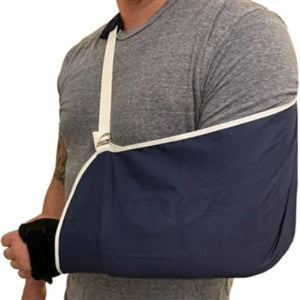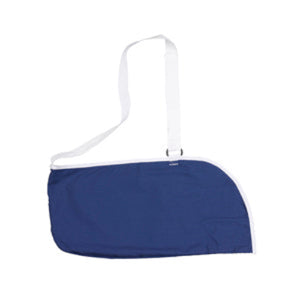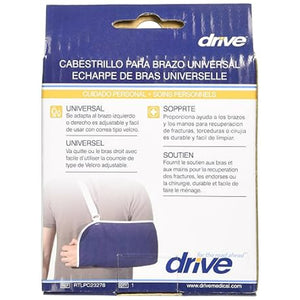An arm or shoulder sling is the best muscle or injury pain approach. However, knowing how to wear a sling properly is important if you have hurt your arm, shoulder, or elbow.
A sling helps support and protect the injured area so it can heal well. Whether you broke a bone, sprained your arm, or had surgery, wearing a sling can make you feel more comfortable and help your injury heal faster.
Follow eight easy steps in this article to learn how to wear a sling and get the most benefit.
What Injuries Need an Arm Sling?
Elbow, shoulder, and arm injuries frequently require an arm sling. The following are a few typical injuries that could need an arm sling:
Broken Bones
If you break a bone in your arm, wrist, or shoulder, an arm sling can help support and protect the injured area while it heals.
Sprains and Strains
If you sprain or strain your arm, shoulder, or elbow, wearing a sling can help reduce movement and support the injured area, allowing it to heal properly.
Dislocations
If a joint in your arm, such as your shoulder or elbow, gets dislocated, an arm sling can help immobilize the joint and prevent further injury until you can get medical treatment.
Tendon or Muscle Injuries
Injuries to the tendons or muscles in your arm, shoulder, or elbow may require a sling to reduce strain on the injured tissues and promote healing.
Post-Surgery
A sling may be required following some forms of arm or shoulder surgery, such as shoulder stabilization or rotator cuff repair, to protect the surgical site and support the arm while it heals.
8 Proper Steps to Wear an Arm Sling
Follow these easiest steps to learn to wear a sling in the right way:
1- Prepare Yourself
Find a chair or a sturdy surface that is comfy and well-supported before placing the sling there.
Make sure you have the sling itself, any straps, and any buckles ready, along with all the other components.
2- Positioning the Sling
Hold the sling with the straps hanging down and the pocket facing up.
Ensure the pocket is beneath the arm by placing the sling's opening over the shoulder on the side requiring support.
3- Inserting the Arm
Slide your wounded arm gently into the sling's pocket. Place your hand close to the entrance, and your elbow comfortably rest at the bottom of the pocket.
You may adjust the sling so that your arm is comfortably supported in the right place.
4- Adjusting the Straps
If the sling comes with movable straps, tug on them to change the length so that your forearm rests against your body at a right angle.
Ensure the sling is positioned so your forearm is barely above your heart level but not too high.
To keep the sling in place, firmly fasten any straps or buckles. Make necessary adjustments to the tightness to guarantee a snug yet comfortable fit.
5- Checking Comfort and Support
Ensure no pressure or uncomfortable spots on your arm when resting in the sling.
Verify that the sling properly supports your arm and isn't moving too much. Adjust the sling to accommodate any pressure points or sore spots you may be feeling.
6- Testing Movement
To ensure the sling feels solid and secure, move your body cautiously. Make sure your arm can move comfortably within the confines of the support by practicing moving it inside the sling.
Steer clear of abrupt or jerky movements that may aggravate your wounded arm.
7- Final Adjustments
Take a moment to rate the sling's overall comfort and fit.
Make any last-minute modifications to the sling's position or tightness for maximum comfort and support.
8- Check Regularly
Periodically check the sling's comfort and fit throughout the day.
Readjust the sling as necessary if you notice any changes in your comfort level or any indications of pressure or pain.
Pay attention to any special instructions your healthcare professional gives about taking care of your injuries and using the sling.
Order Your Arm Sling from MoovKart!
Your body deserves the best healing. You must buy the best equipment to speed up your healing process.
MoovKart has the best patient life and slings collection. Order yours now and give your shoulder the much-needed comfort.
People Also Ask!
How Do You Lay With a Sling?
Keep your injured arm supported and elevated to reduce swelling and discomfort when lying down with a sling.
What are the Side Effects of Wearing a Sling?
Side effects of wearing a sling may include mild discomfort, skin irritation, or muscle stiffness due to limited movement.
Should I Sleep with a Sling On?
It's generally not recommended to sleep with a sling on unless specifically advised by your doctor. It could be uncomfortable or limit blood flow.









